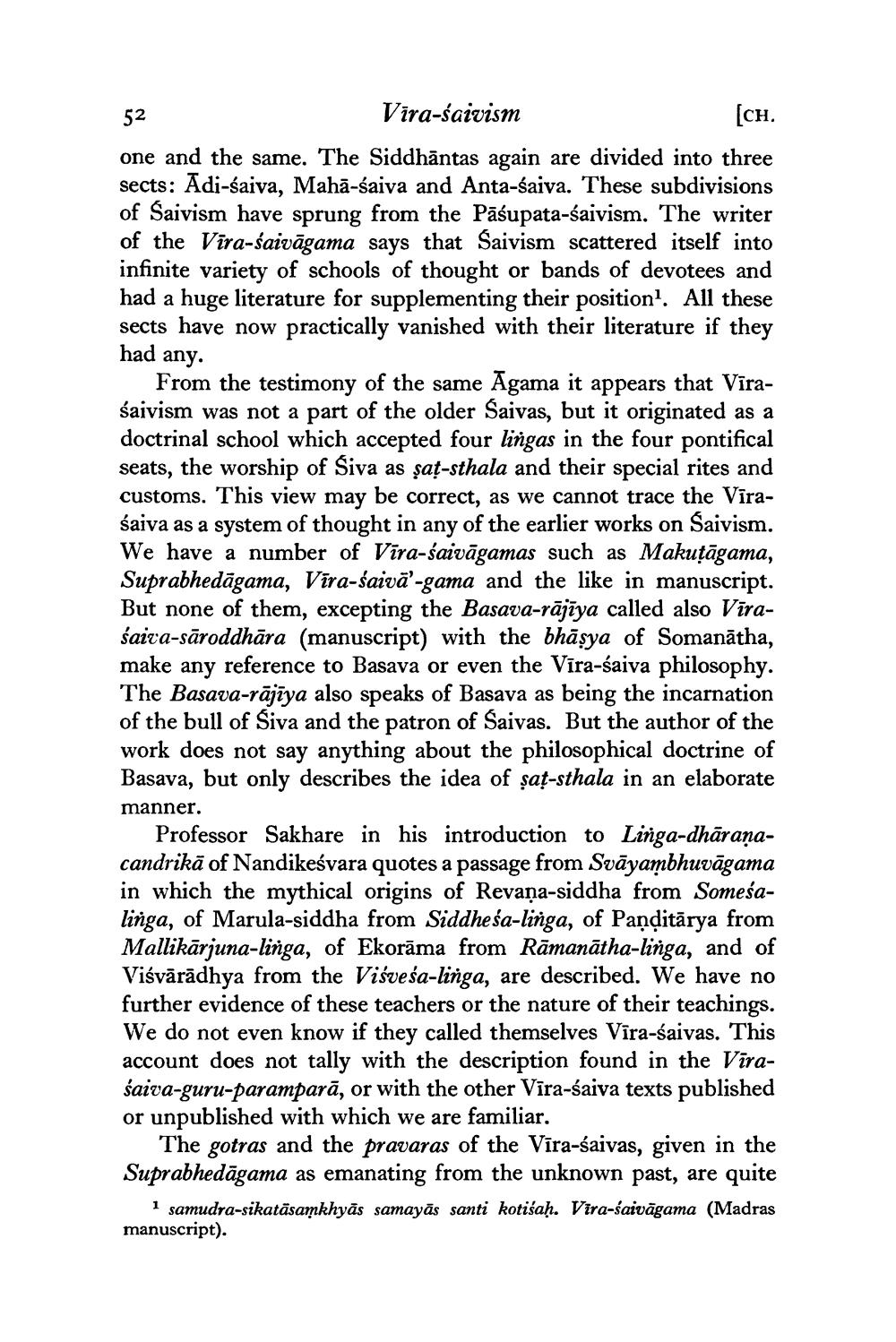________________
52
Vira-saivism
[CH. one and the same. The Siddhāntas again are divided into three sects: Ādi-saiva, Mahā-śaiva and Anta-śaiva. These subdivisions of Saivism have sprung from the Pāśupata-saivism. The writer of the Vira-saivāgama says that Saivism scattered itself into infinite variety of schools of thought or bands of devotees and had a huge literature for supplementing their position?. All these sects have now practically vanished with their literature if they had any.
From the testimony of the same Agama it appears that Vīrasaivism was not a part of the older Saivas, but it originated as a doctrinal school which accepted four lingas in the four pontifical seats, the worship of Siva as șaț-sthala and their special rites and customs. This view may be correct, as we cannot trace the Viraśaiva as a system of thought in any of the earlier works on Saivism. We have a number of Vīra-saivāgamas such as Makuțāgama, Suprabhedāgama, Vira-saivā'-gama and the like in manuscript. But none of them, excepting the Basava-rājīya called also Vīraśaixa-sāroddhāra (manuscript) with the bhāsya of Somanātha, make any reference to Basava or even the Vīra-śaiva philosophy. The Basava-rājīya also speaks of Basava as being the incarnation of the bull of Siva and the patron of Saivas. But the author of the work does not say anything about the philosophical doctrine of Basava, but only describes the idea of șaț-sthala in an elaborate manner.
Professor Sakhare in his introduction to Linga-dhāraņacandrikā of Nandikeśvara quotes a passage from Svāyambhuvāgama in which the mythical origins of Revaņa-siddha from Somesalinga, of Marula-siddha from Siddheśa-linga, of Panditārya from Mallikārjuna-linga, of Ekorāma from Rāmanātha-linga, and of Viśvārādhya from the Viśveśa-linga, are described. We have no further evidence of these teachers or the nature of their teachings. We do not even know if they called themselves Vīra-śaivas. This account does not tally with the description found in the Vīraśaiva-guru-paramparā, or with the other Vīra-śaiva texts published or unpublished with which we are familiar.
The gotras and the pravaras of the Vīra-śaivas, given in the Suprabhedāgama as emanating from the unknown past, are quite
samudra-sikatāsamkhyās samayās santi kotiśaḥ. Vira-saivāgama (Madras manuscript).




